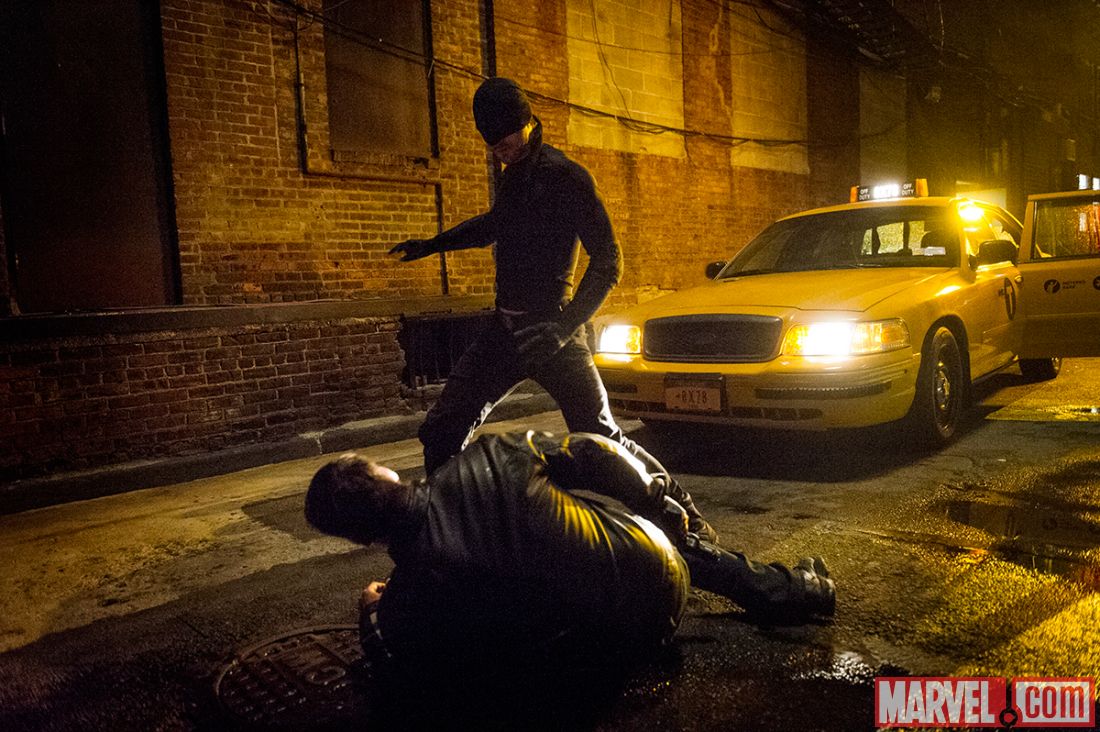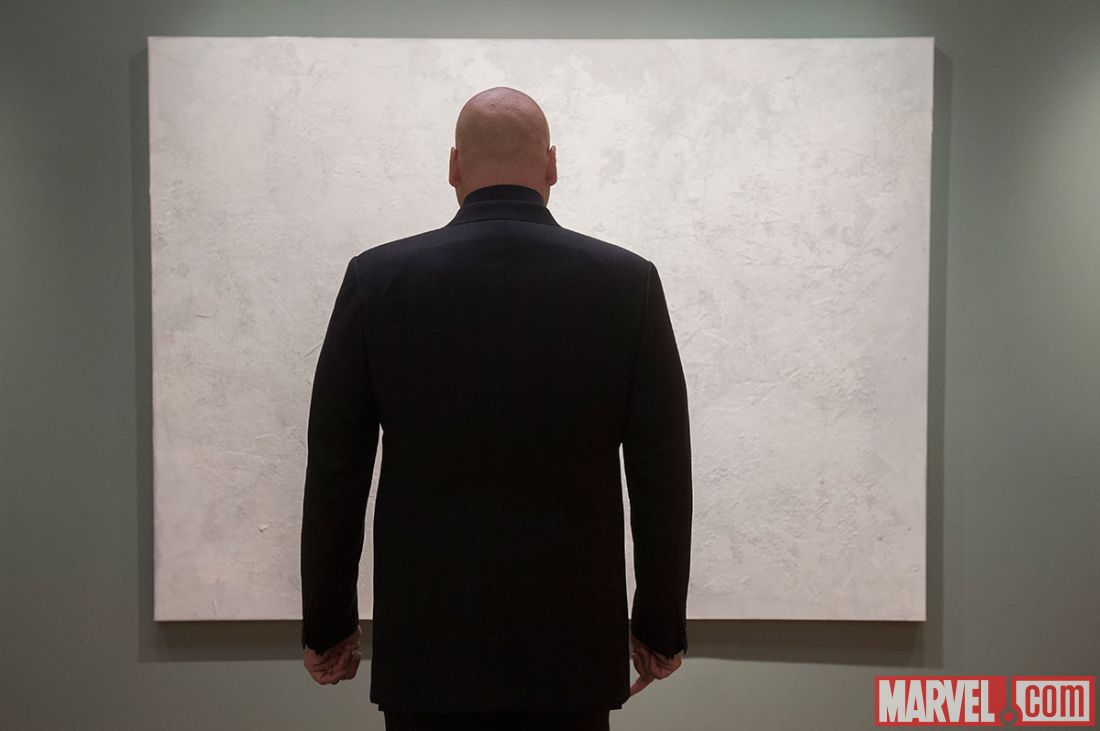TV Review: 'Daredevil'

I used to consider myself a big Marvel fan. Every summer, my dad would drag me to the theater with him for one Marvel blockbuster after the other. On our ride back home, he would answer my questions about Peter Parker’s childhood and Professor Xavier’s spinal damage, even the supernatural phenomenon behind the Hulk’s ever-expanding purple pants.
I thought I knew everything about Marvel. That changed when the first Avenger movie "Iron Man" hit theaters in 2008. I realized Stan Lee had dreamt up an entire universe that extended beyond what a two-hour film could cover. It became a struggle keeping up with this alternate realm.
Netflix’s new "Daredevil" series is different in this regard. There is no shortage of action in the show, but because of more time — thirteen 55-minute episodes in the first season — viewers also get a proper introduction to the characters. The intimacy and insight make it easy for Marvel novices like myself to follow, while still satisfying longtime fans who are more familiar with the story.
READ MORE: 'Unfriended' Proves That Online, Your Memories Last Forever
Although "Daredevil" is not Marvel’s first television show, it is different from ABC series "Agents of S.H.I.E.L.D." and "Agent Carter" in many ways. Unlike the two older series, "Daredevil" primarily focuses on character build-up, following the evolution of Matt Murdock (Charlie Cox) carefully over the years, trying to understand his motivation to save the city and his devotion to the neighborhood where he grew up: Hell’s Kitchen.
This level of character development cannot be found in any other Marvel film. There is a huge jump in time, for example, between the first "Captain America" and the second, and with "The Avengers" in between, a chunk of Steve Rogers’s life is missing from the screen.
By contrast, in "Daredevil," episodes connect. Netflix released the entire season in one go, which helps the series feel more like a smooth-running 12-hour film than seperate jigsaw pieces given piecemeal to viewers to connect on their own.
The all-at-once release is not the only explanation for the fluid plot. With an entire series, screenwriters have more time to play with the characters. One of the best examples from the show is the villain, Wilson Fisk a.k.a. the Kingpin (Vincent D'Onofrio). In the comic books, the Kingpin is much more intimidating, towering above the other characters, and in the 2003 "Daredevil" film starring Ben Affleck, the role is played by Michael Clarke Duncan, an imposing man in his own right.
The Netflix series introduces the colossal villain using a different method, uncovering a side of Fisk Marvel fans have never experienced before. In the first few episodes, all signs pointed to Fisk as the man behind the homicides and the prolific embezzlement case. However, one of the first scenes with the crime overlord is at an art gallery where he purchases a painting that reminds him of his loneliness. Fisk also falls in love. By showing Fisk’s softer side first, the villain is humanized. He becomes much more complex because he’s not made of pure evil. His traumatic childhood, which is told toward the end of the first season, may actually surprise viewers because of how much they empathize with him.
READ MORE: Why Video Game Adaptations Are Doomed To Fail

Marvel films often seek inspiration from real world problems. "Captain America: The Winter Soldier" discussed the political and moral issue of spying on citizens. In "Daredevil," the subject is gentrification, a driving force behind social issues like income disparity and a widening socio-economic gap, and also the reason why some low-income neighborhoods have been revitalized and experienced an economic upturn.
The many advantages and disadvantages of the urban process are a major point of focus in "Daredevil," with Murdock and Fisk taking different sides of the debate. Typically, it is easiest to side with the superhero — Who would support Loki’s mission to invade and take over planet Earth in "The Avengers?" Or voice support for #TeamMalekith in "Thor 2: The Dark World" when his goal is to send the universe into darkness? — But "Daredevil" doesn't let the audience have it that easy. The plot lives in grey areas, resulting in a thought-provoking story that’s much more realistic, and therefore, intriguing and relatable.
The issue of gentrification also brings out the parallels between the two characters. Murdock and Fish stand on opposite sides of the war for the soul of Hell’s Kitchen, but both have the same endgame in mind: to improve the place that raised them. It only takes looking into the childhoods of Daredevil and Kingpin to explain how two Hell’s Kitchen kids came to be arch-enemies despite their similar goals. A troubled youth, marked by instability at home and the loss of a parent, make both characters fearless fighters and worthy opponents for each other.
READ MORE: Are Live-Action Remakes Of Animated Disney Classics Good Or Bad?
"Daredevil" is one of the most interesting comic book characters. Matt Murdock may not have the old-school patriotic charm of Captain America or the sarcastic wit of Iron Man, but the many facets of his personality make him real. Murdock evokes a plethora of conflicting emotions from viewers who will pity him for losing his sight in a car accident, but who will also question his morals and actions, which sometimes stray toward personal vengeance against the city’s underworld, which he blames for his father’s death.
This internal tug-of-war between admiring and scrutinizing Murdock keeps the series exciting. After all, sometimes it’s fun to root for the devil.
Reach Staff Reporter Uracha Chaiyapinunt here. Follow her on Twitter here.



